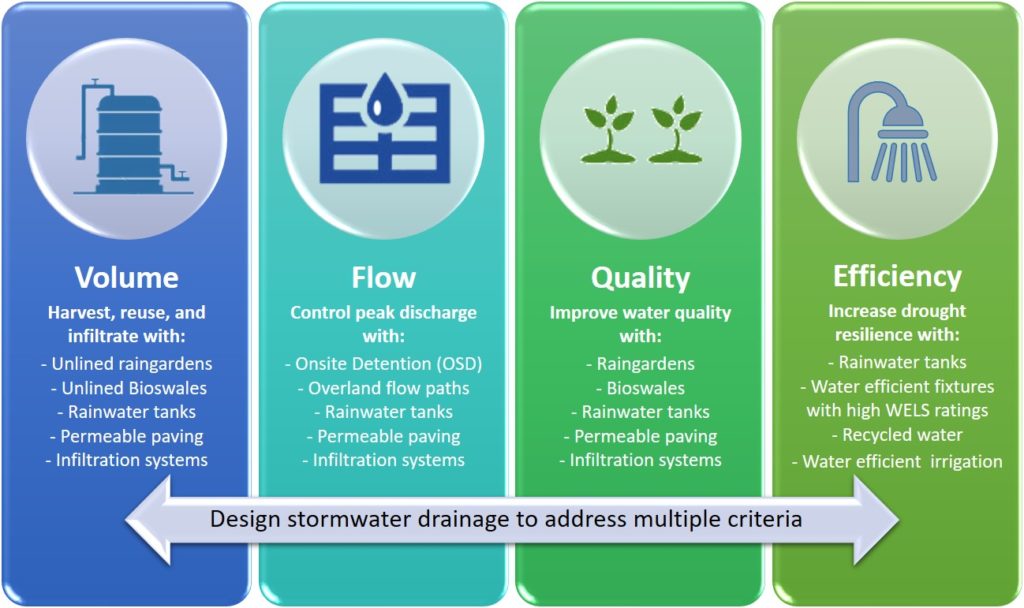|
Stormwater objective
|
Harvest and re-use or infiltrate stormwater
|
Control peak stormwater discharge
|
Improve stormwater runoff water quality
|
Increase drought resilience
|
|
Stormwater target
|
No more than a 10% increase in average annual runoff volume
|
Increase in peak discharge flows (post development compared with predevelopment) = 0
If greater than zero this is the additional site storage requirement (SSR) volume required. If less than zero, the development complies
|
Achieve a score of 100 or more
|
Achieve greater than 25% potable water use reduction
|
|
Notes
|
This is annual average volume, which is not the same as a peak flow rate. Reducing annual average runoff volumes has great broader catchment and river health outcomes.
|
This section uses the modified rational method to determine how the development behaves during a major storm event.
The required storage is reduced by 1/3 of any entered rainwater tank volume, plus all entered detention volume.
For example a 3000L rainwater tank with an additional 700L of detention would provide a 1700L reduction in required storage.
|
A score of 100 is equivalent to achieving a 45% reduction in nitrogen runoff. As nitrogen is the hardest pollutant to remove, it is an indicator that the site is meeting stormwater quality best practice targets.
|
Water efficiency is a combination of the efficiency of the fittings and fixtures, and also how much potable water is substituted with retained rainwater (or alternative non-potable) water sources).
|
|
Tips to improve your score
|
Increase tank size, area connected to your roof, and number of rainwater end uses.
Infiltration systems are also helpful to manage surface runoff volumes or reduce impervious areas using pervious paving.
|
To pass this section increase rainwater tank size or add dedicated detention volume.
Infiltration system volumes will also help achieve this target, provided site soils are suitable.
|
Increase the amount of rainwater that is harvested and used on site. Alternatively treat rainwater with other WSUD treatments like raingardens and swales.
|
Increase the amount of rainwater that is harvested and used on site.
Choose fittings and appliances to increase efficiencies beyond the default settings.
|





